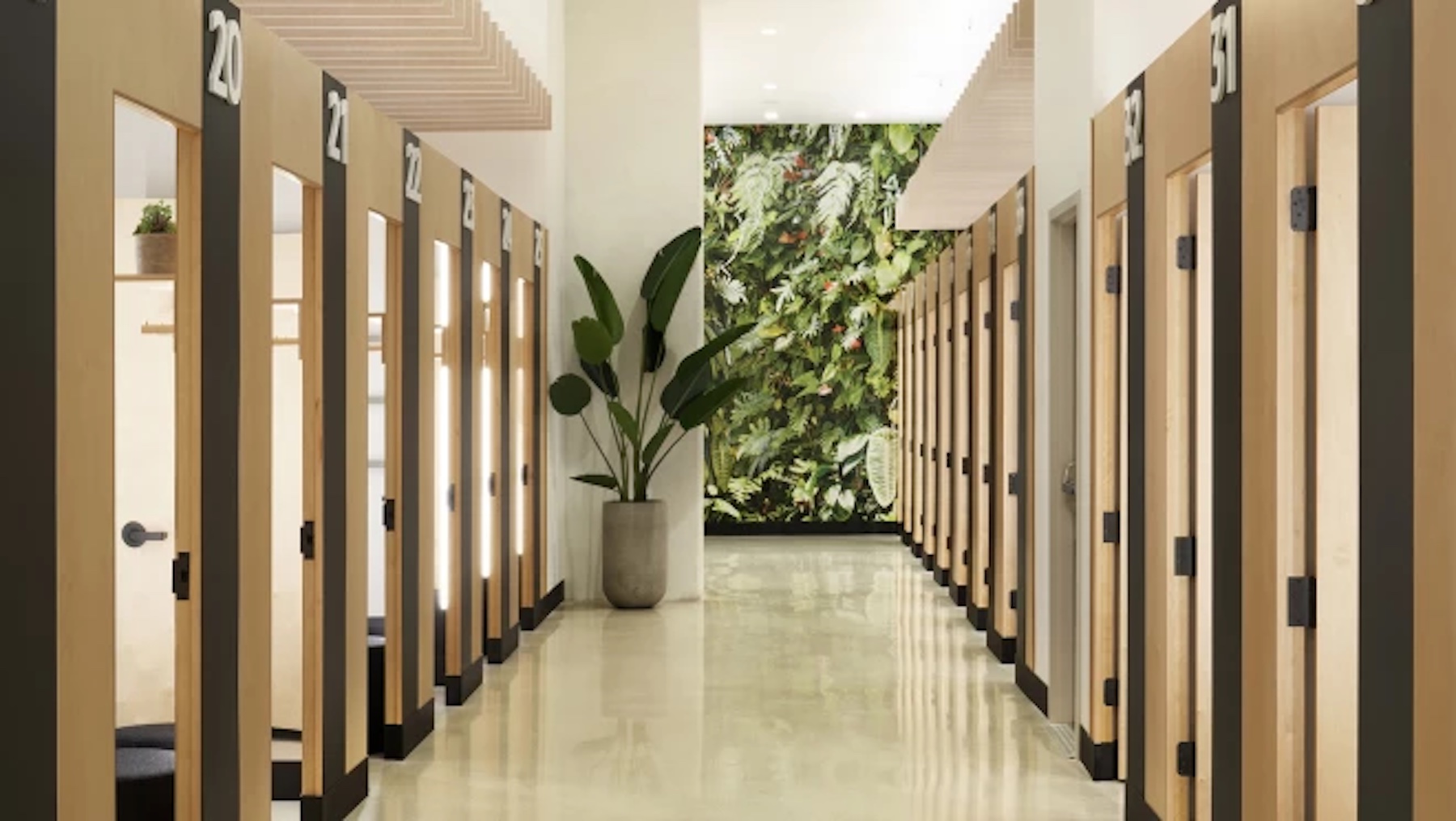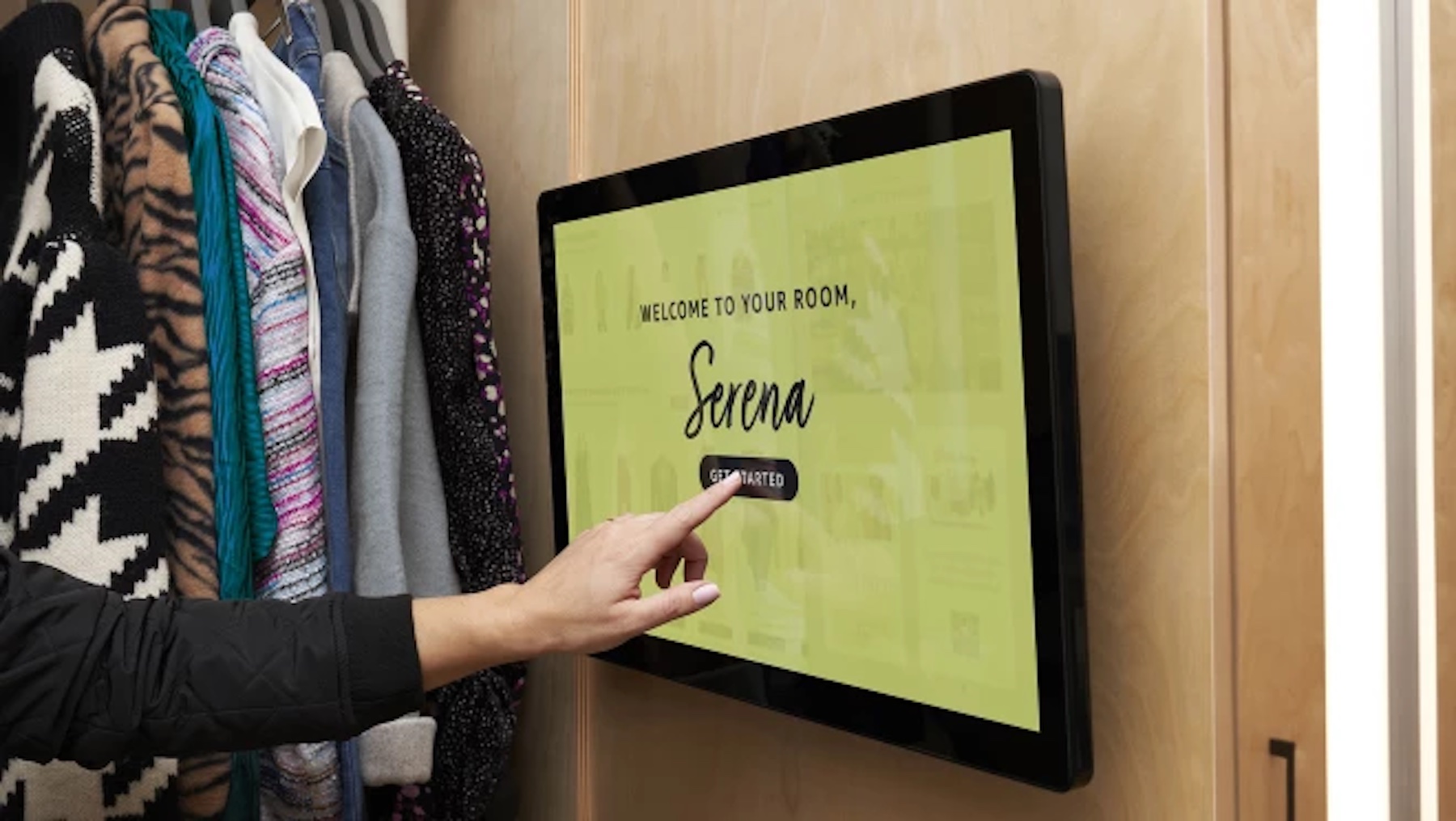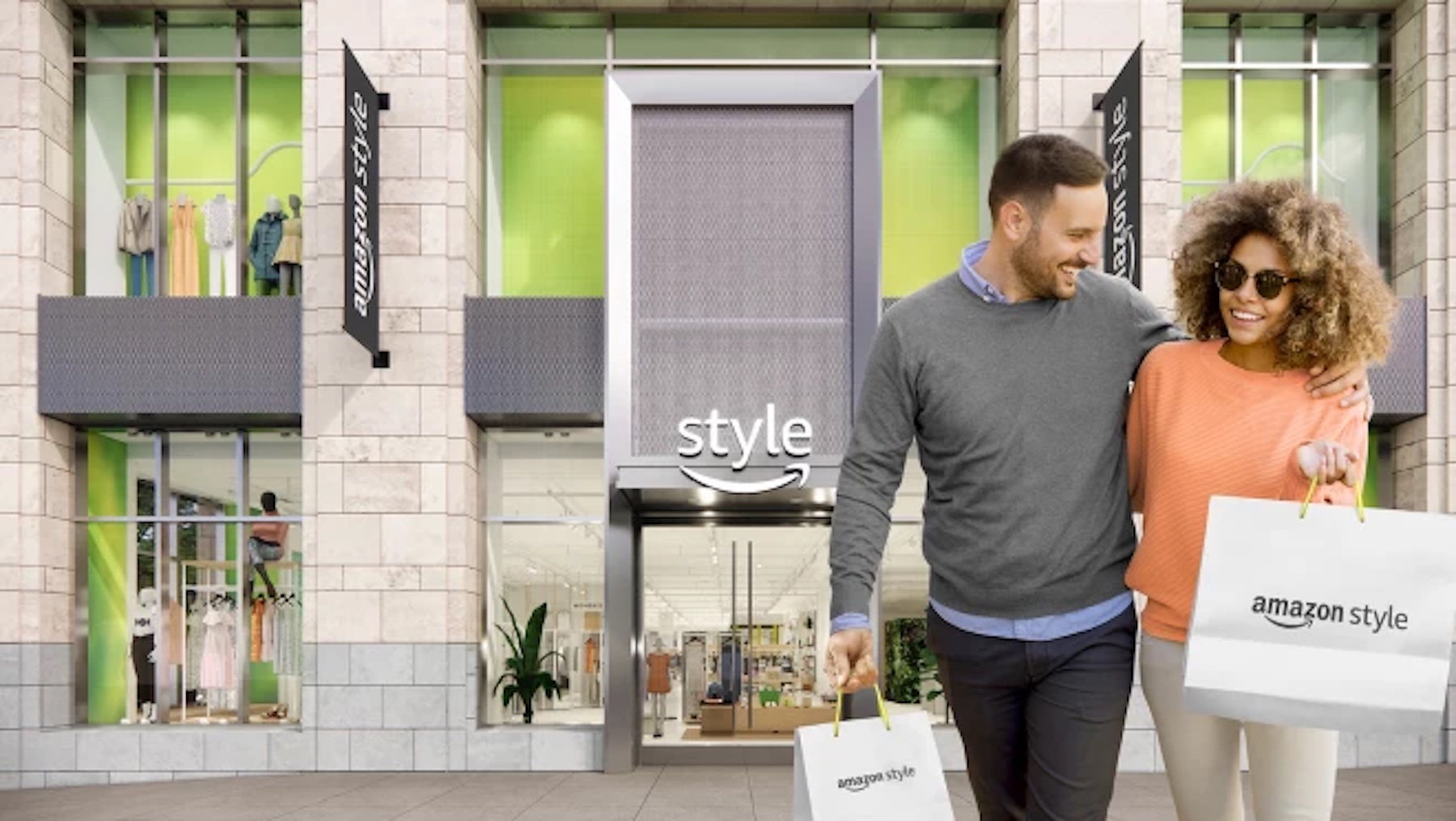Last week, Amazon unveiled plans to build a physical fashion store concept, dubbed Amazon Style, in Los Angeles. The e-commerce giant says the store will offer “together the best of shopping on Amazon–great prices, selection, and convenience–with an all new shopping experience built to inspire.”
Amazon has proven to be a giant in online apparel shopping, growing year after year. Last March, Wells Fargo reported that the company surpassed Walmart as the No. 1 apparel retailer in the United States. Now, the company is looking to transfer that online success into physical success with Amazon Style.
The 30,000–sf store will be about the size of a typical TJ Maxx, but smaller than your average department store. The first location is set to open in a Los Angeles suburb later this year. Amazon has given physical retail a shot in the past in the form of groceries and books, but it has never sold clothing or shoes in stores, until now.
Amazon will stock its own products, well known names such as Adidas and Jockey, as well as up-and-coming brands. The store will cater to every price point. “You’ll find everything from the $10 basic to the designer jeans to the $400 timeless piece,” said Simoina Vasen, managing director of Amazon Style.

Amazon's Tech-Based Shopping Experience
Customers will notice a few different features than your average retail clothing store as soon as they walk in the door. Amazon Style will be the first of its kind, truly relying on technology and their mobile app.
The front of the store will feature “display items” with one size and one color of each product, and customers will be able to scan a QR code and see the sizes, colors, and products available.
Each of the fitting rooms will have touch screens where shoppers can have items sent to them. Lastly, checkout will be facilitated by Amazon One, the company’s palm-scanning technology.
Non-Traditional Retail Convenience
Obviously this way of shopping is non-traditional, but the real question is will it work? After the announcement, there has been some debate on whether or not shoppers prefer this style of shopping or would rather search through clothing racks for a hidden gem.

Many shoppers do enjoy the experience of “treasure hunting”, but the company believes in their mission. Although Amazon Style’s QR code model doesn’t necessarily fall in line with those customers wanting to look through different selections, it does offer one thing that many people look for when it comes to their time and shopping experience, which is convenience.
Convenience seems to be the common theme with Amazon Style’s QR code model, and Vasen believes their “unique store design, advanced technology, and thoughtful curation will make it easier than ever for customers to have an inspiring, convenient, enjoyable, and ultimately successful shopping experience.”

Related Stories
| Aug 11, 2010
Manhattan's Pier 57 to be transformed into $210 million cultural center
LOT-EK, Beyer Blinder Belle, and West 8 have been selected as the design team for Hudson River Park's $210 million Pier 57 redevelopment, headed by local developer Young Woo & Associates. The 375,000-sf vacant passenger ship terminal will be transformed into a cultural center, small business incubator, and public park, including a rooftop venue for the Tribeca Film Festival.
| Aug 11, 2010
D.C. gets sweeter with expanded green eatery
Greens Restaurant Group has expanded its popular salad and yogurt eatery, sweetgreen, to two neighborhoods in the Washington, D.C., area, Dupont Circle and Bethesda, Md. Designed by local architect CORE architecture + design, the experiential dining projects use salvaged hickory for the walls, wood recycled from the old bowling alleys for the tables and chairs, and sustainable paper/dye product...
| Aug 11, 2010
U.S. firm designing massive Taiwan project
MulvannyG2 Architecture is designing one of Taipei, Taiwan's largest urban redevelopment projects. The Bellevue, Wash., firm is working with developer The Global Team Group to create Aquapearl, a mixed-use complex that's part of the Taipei government's "Good Looking Taipei 2010" initiative to spur redevelopment of the city's Songjian District.
| Aug 11, 2010
Florida mixed-use complex includes retail, residential
The $325 million Atlantic Plaza II lifestyle center will be built on 8.5 acres in Delray Beach, Fla. Designed by Vander Ploeg & Associates, Boca Raton, the complex will include six buildings ranging from three to five stories and have 182,000 sf of restaurant and retail space. An additional 106,000 sf of Class A office space and a residential component including 197 apartments, townhouses, ...
| Aug 11, 2010
Glass Wall Systems Open Up Closed Spaces
Sectioning off large open spaces without making everything feel closed off was the challenge faced by two very different projects—one an upscale food market in Napa Valley, the other a corporate office in Southern California. Movable glass wall systems proved to be the solution in both projects.
| Aug 11, 2010
CityCenter Takes Experience Design To New Heights
It's early June, in Las Vegas, which means it's very hot, and I am coming to the end of a hardhat tour of the $9.2 billion CityCenter development, a tour that began in the air-conditioned comfort of the project's immense sales center just off the famed Las Vegas Strip and ended on a rooftop overlooking the largest privately funded development in the U.
| Aug 11, 2010
The softer side of Sears
Built in 1928 as a shining Art Deco beacon for the upper Midwest, the Sears building in Minneapolis—with its 16-story central tower, department store, catalog center, and warehouse—served customers throughout the Twin Cities area for more than 65 years. But as nearby neighborhoods deteriorated and the catalog operation was shut down, by 1994 the once-grand structure was reduced to ...
| Aug 11, 2010
American Tobacco Project: Turning over a new leaf
As part of a major revitalization of downtown Durham, N.C., locally based Capitol Broadcasting Company decided to transform the American Tobacco Company's derelict 16-acre industrial plant, which symbolized the city for more than a century, into a lively and attractive mixed-use development. Although tearing down and rebuilding the property would have made more economic sense, the greater goal ...







